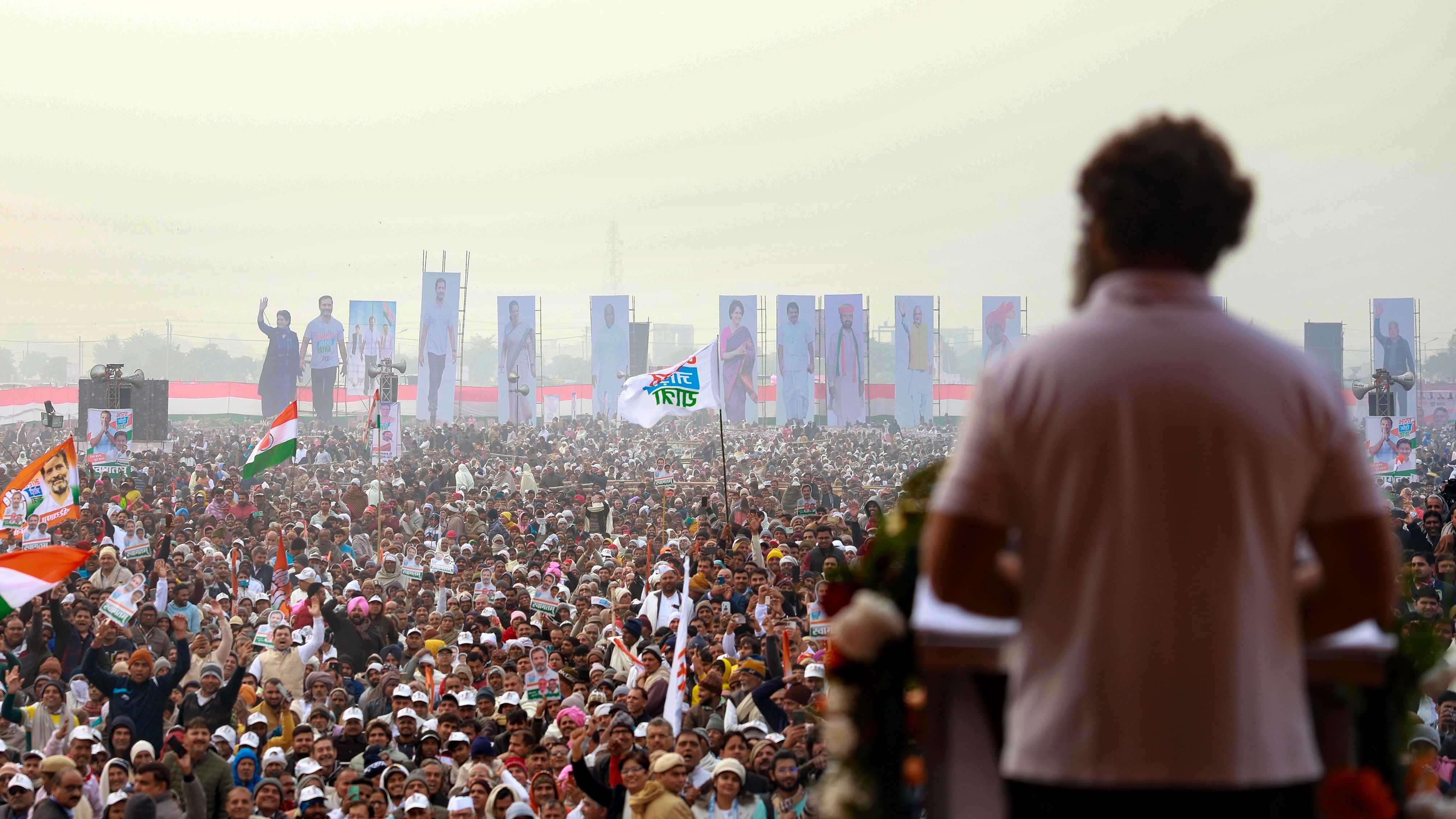
Congress leader Rahul Gandhi's much-vaunted Bharat Jodo Yatra has gone through four of the nine states that go to polls later this year. What will be tested in these polls are many hypotheses. Who are the people who are coming to the Bharat Jodo Yatra? Are they really Congress supporters? Do they come for his march as they recognise a threat to national unity from the BJP's politics and hence feel the need for a Congress-led awareness campaign? What about the grand effort of Rahul Gandhi to walk these thousands of kilometres: Will it change the voting behaviour of the masses? Will the Congress do better in the state elections and later in parliament polls in 2024? What about the minorities? Will their support of the Congress polarise the majority community around the BJP?
These difficult questions are being raised not just by sceptics amongst commentators but also by hundreds of thousands of people flocking to watch Rahul's long march in different parts of the country. If crowds are any indicator, it has been getting a stirring response in areas that have drifted away from the Congress over the years. In Western UP, for instance, where the Congress resides in the memories of the old timers only, the Yatra has seen excited young men converging in significant numbers.
Perhaps, it has been helped by the support that Jayant Chaudhary of Rashtriya Lok Dal (RLD) has extended to the Congress. Besides, Rahul's march has fired the imagination of the minorities of this area, which has seen communal disquiet for some time. This trend was also visible in Delhi, where Gandhi moved through the riot-affected areas of the capital. Though local media underplayed it, the minorities display uniformly that their support for the parliament elections is for the Congress party.
If this trend of minority support for the Congress consolidates, then there are 140 odd parliamentary constituencies in the country where minorities play a significant role in deciding the final winner. In the last 8+ years of the BJP rule, the minorities have felt most the blunt edge of the Sangh Parivar's attempts to shift the locus of Indian politics away from secularism. They have had to face the ignominy of being accused of love jihad, being lynched for engaging in alleged cow slaughter as well as experiencing regular harassment for what they wear or how they look.
If the Muslims indeed coalesce around the Congress in many constituencies of the country, then two things might happen - a repeat of the 2004 general elections, where the Congress benefited from the post-Godhra anger against the BJP, and the other is the counter-mobilisation of the majority community. Does this mean that the long march, for the kind of support it is eliciting, could end up helping the BJP in the 2024 elections?
Then there is also a view that many of those coming for Rahul Gandhi's BJY are from the Sangh trying to create an illusion that there is plenty of support for the Congress. Those who are peddling this theory believe that if the leaven in the Congress fortunes yields dividends and it wins more seats, then the regional parties will diminish and help the BJP to win more seats from some states like West Bengal and Odisha.
This is a tricky bit for the Congress. If one looks at how the BJP is controlling the narrative, then one can safely come to the conclusion that it is trying many things to return to power in 2024. To begin with, they are blocking the coverage of Rahul Gandhi's long Yatra on mainstream TV and print media. Hence, anyone trying to track the progress of the Yatra would realise that news TV and newspapers are of little help from the standpoint of the space they give to this big effort and how they report it. One has to go to the BJY website or social media platforms to ascertain how the march is progressing. This must be discouraging for the Congress workers who were hoping that their social media presence will pierce through the obstructions that have been placed by the government.
The ruling party managers have also subjected them to very clever headline management. Ever since the Yatra came close to the National Capital Region (NCR), the TV media has not reported anything except crimes: first, the horror of a woman being dragged by a car, and subsequently, a report of urinating business class passengers on an Air India flight from New York. Whenever the Yatra gets any coverage, it is about the trivia of why Rahul Gandhi is wearing a t-shirt in bitterly cold conditions rather than the support it is getting. Expectedly, many reporters are seeking bytes from everyone on why Rahul is not feeling the cold rather than his message of communal amity.
Congress managers have been complaining about the absence of organisation and how it can squander the gains of the Yatra many months before the elections take place in crucial states like Karnataka, Rajasthan, MP, and Chhattisgarh. The elections in the northeast states take place earlier. If recent elections to Himachal Pradesh are anything to go by, then those areas where the Congress is in power or has a sizable presence than the Yatra are making a decent impact.
In many states where it is not in power, it fears that the ruling party would muscle its way to success. The big question is whether the country will see a repeat of 2018 when the BJP lost three states from the Hindi heartland and then surprisingly won a handsome victory in the 2019 parliament elections. The Congress party hopes that history does not repeat itself in 2024.
(The writer is the Editor of Hardnews magazine)
Disclaimer: The views expressed above are the author's own. They do not necessarily reflect the views of DH.